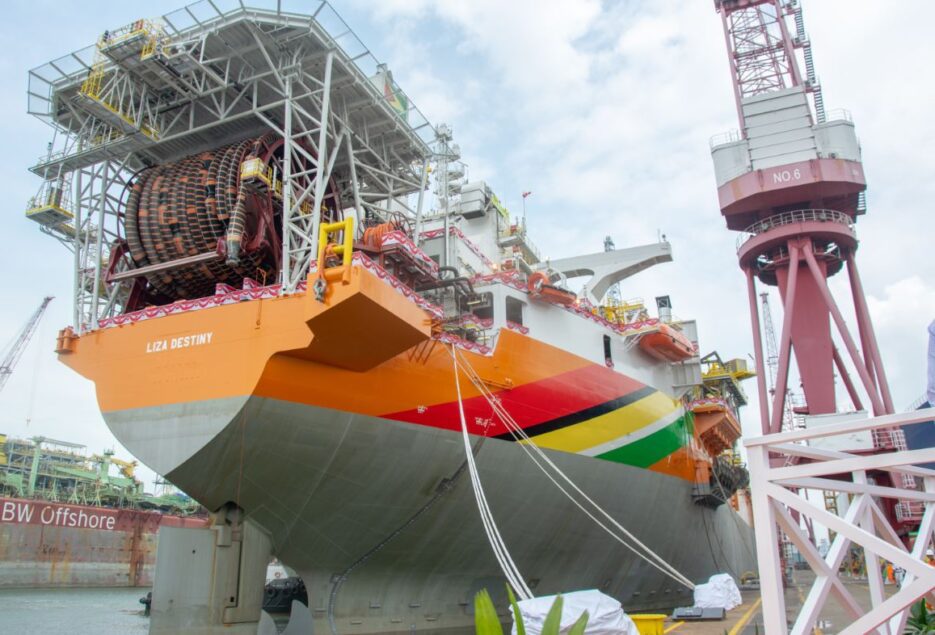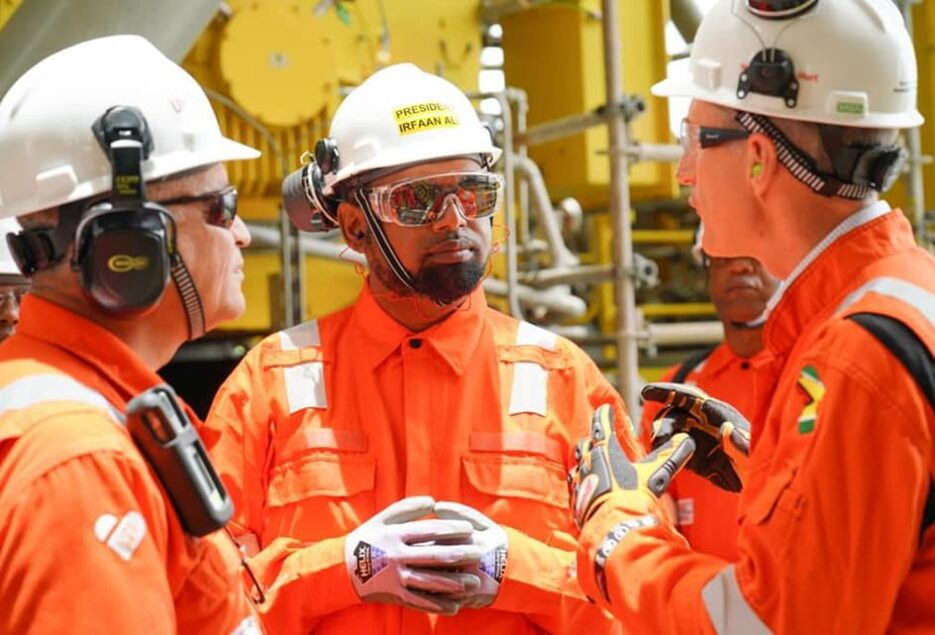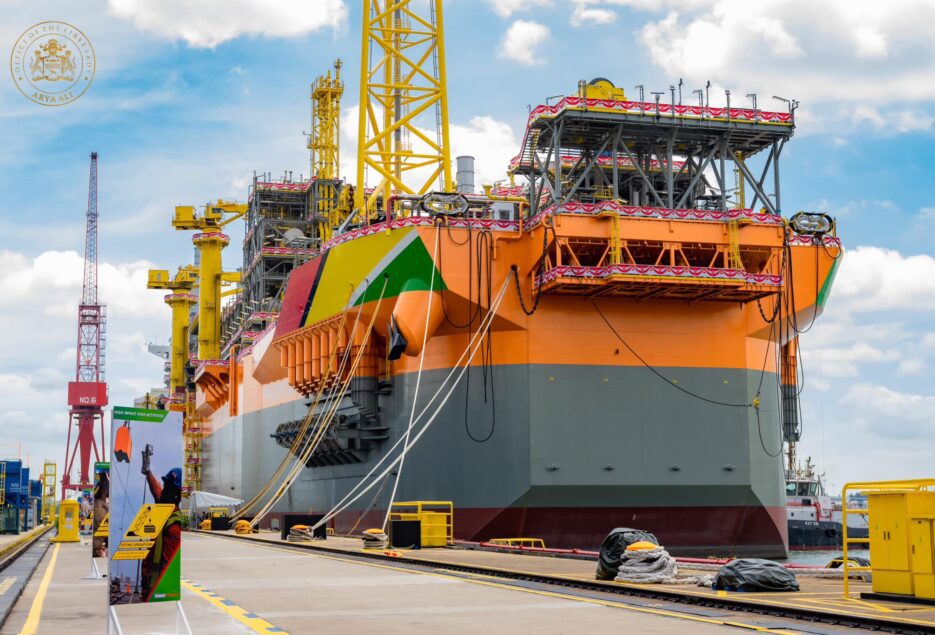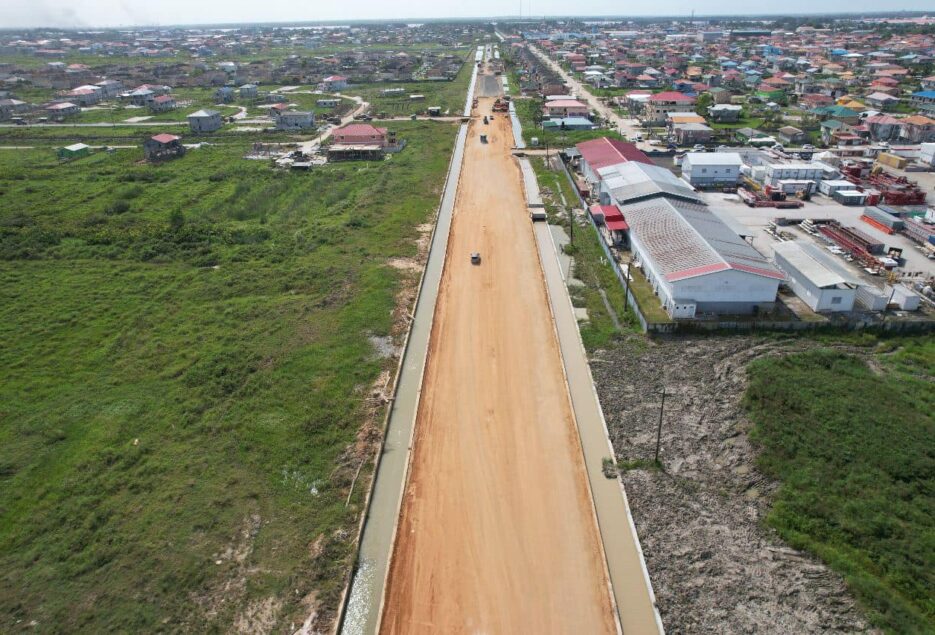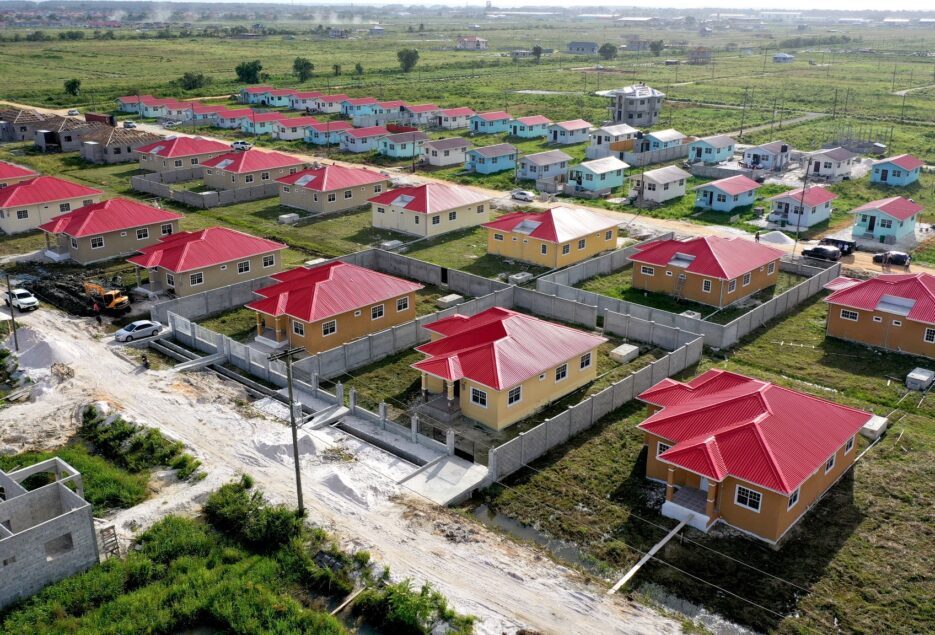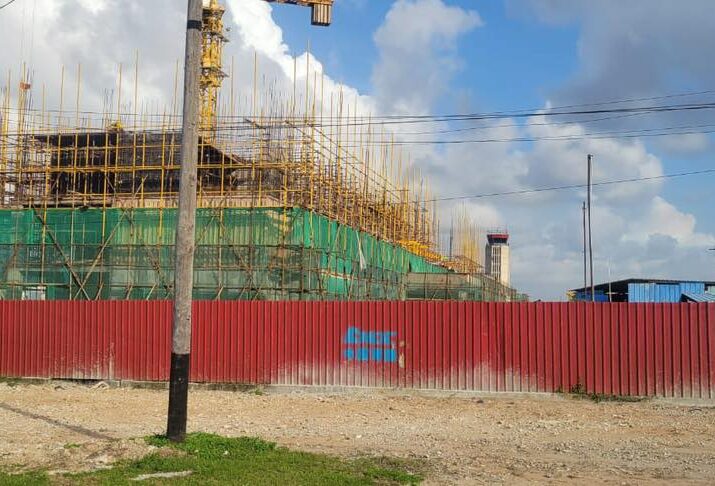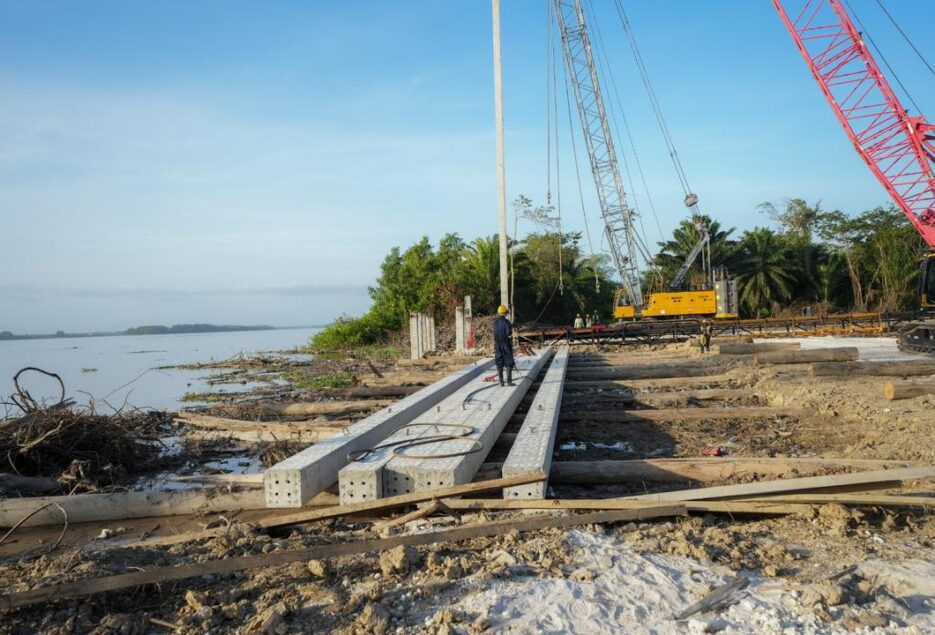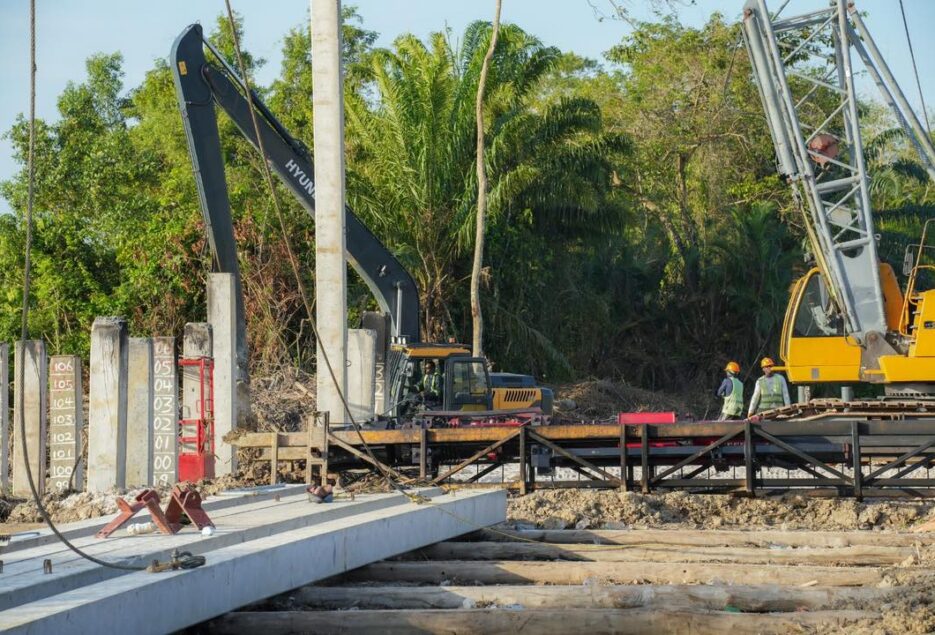With enormous oil reserves, Guyana stands on the threshold of transformation. Its economy grew more than 60 per cent in 2022 largely because of an influx of oil revenues. But the nation’s rich resources come with promised opportunities and serious risks.
In 2023, the challenge is to ensure those financial resources are put to work improving education and healthcare for Guyana’s people, protecting its environment and diversifying the nation’s overall economy.
CIJN spoke with some of Guyana’s civic leaders who warn it can only be done if the government opens its books to the public and promotes a national dialogue about how this newfound wealth can be put to work.
“The oil curse is in many ways a consequence of oil in the absence of strong regulatory controls, accountability, transparency, disclosure and reporting,” Chartered accountant and attorney-at-law, Christopher Ram said during an interview. Ram has warned about corruption for decades. He continues to advocate for robust oversight mechanisms to manage Guyana’s oil wealth.
Guyana’s population hovers around 800,000 in 2023. That magnifies the effect the country’s oil riches will have on every citizen. It’s simple mathematics.
Lessons From a Neighbor
For a full-blown picture of what the oil curse looks like, Guyana need only to gaze across the border at the economic and social predicament of Venezuela. The nation that once laid claim to being the richest in all of South America is on its knees. Millions of its citizens have fled the country looking for food, healthcare and employment. Approximately 30,000 have come to Guyana.
“If you look at the history of Venezuela,” Frederick Collins offered, “the odds are not in our favour.” Collins is Director of the Transparency Institute of Guyana Inc. (TIGI).
Economist and lecturer at the University of Guyana, Sydney Armstrong is more optimistic. He told CIJN the challenge is in better utilizing Guyana’s oil wealth “to bring about wider developmental opportunities, especially for the vulnerable people, especially for the poor. I think we are…putting in all efforts to ensure that we don’t fall into the natural resource curse.”
An Economy in Overdrive
The International Monetary Fund declared Guyana one of the fastest growing economies in the world. In a September report, the IMF projected Guyana would grow 60% in 2022.
During his presentation of the National Budget for 2023, Minister with responsibility for Finance Dr. Ashni Singh reckoned the economy actually grew by 62.3 per cent in 2022.
He announced a budget amounting to $3.7 billion US dollars ($781.9 Billion Guyana dollars).
Guyana’s earnings from oil and gas are deposited in the country’s National Resource Fund (NRF) which recorded a balance of more than $1.4 Billion USD in March 2023. The government reports thirty per cent (30%) of the 2023 budget will be drawn from the NRF.
At Guyana’s annual Energy Conference, sponsored by the oil industry, Liam Mallon, President of ExxonMobil Upstream Oil and Gas Company was exuberant.
“Think about what’s going on today offshore. We have two state of the art floating production and storage vessels, the Destiny and the Unity producing 380,000 barrels a day with exceptional, exceptional safety and reliability. By the way, that’s 40,000 barrels a day above the design capacity,” Mallon said in his address at the Energy Conference last month.

With oil and gas production comes opportunities such as employment, private investment, capacity building and developing a globally competitive local workforce and supply chain. Locally, about 4400 Guyanese are employed in the oil industry.
“We’ll have newly upskilled workers trained, better access to new sports facilities, improved science and engineering facilities at the University of Guyana. Enhanced electrical and welding training at the Council for Technical and Vocational Education and Training (CTVET) [and] Vocational Institutes. Sustainable chicken breeding in remote communities and even more programs to come from the Guyana Greater Initiative,” Mallon told the conference highlighting his pride to be part of Guyana’s transformation.
Mallon said a third Floating Production, Storage and Offloading vessel, the Prosperity 1 was being fitted in Singapore and a fourth was under construction. He told gathered dignitaries from Guyana and other CARICOM nations Guyana’s oil production would reach more than 1.2 million barrels a day by the end of 2027.
There was no dissent from the gathered crowd at the Energy Conference. Members of the public who wanted to attend had to undergo a screening process while the media was relegated to watching events on a television screen in a nearby room.
The only voices raised in protest were environmentalists a couple of blocks away, on the other side of police barricades.
As ExxonMobil’s Liam Mallon heaped praise on Guyana’s government he did not mention that the country’s oil resources had helped push the oil giant’s profits to an industry-leading record $56 Billion USD in 2022.
Instead, the Energy Conference focused on how oil and gas were transforming Guyana’s future, with more good news expected in years to come.
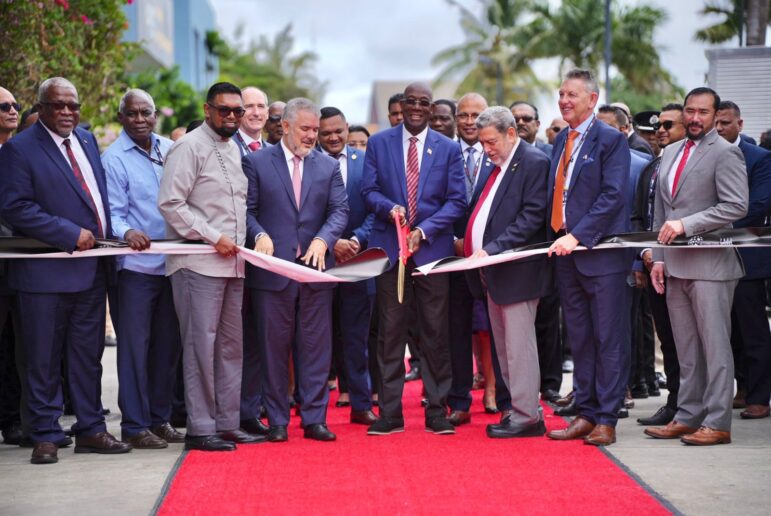
Recognizing the Benefits of Guyana’s Oil Resources
This year will see a sharp increase in key sectors in the country as the government is putting the money to work with a wide range of development and infrastructural projects and investments in agriculture, education and health.
Citizens can see new infrastructure being built across the country from bridges to roads along with several hospitals earmarked for construction.
Guyana ploughed more investment earned from oil back into key sectors of its economy. Each sector received large increases. The most significant increase saw Public Works allocated more than 650 million USD to undertake the construction of several road networks, bridges and drainage works in 2023.
Guyana discovered oil in 2015 on its Stabroek Block – a 6.6 million acres block on which the main operator is US-based ExxonMobil with a 45% interest, Hess Guyana Exploration Ltd. with 30% interest and China’s CNOOC with 25% interest. Therefore, it is not surprising that the industry has been dominated by foreign investors. Experts warn this can lead to corruption, exploitation and mismanagement of the resources.
Transparency and Accountability
The profound impact oil will make on the developing country’s economy is already clear. But Chartered accountant and attorney-at-law Christopher Ram says it is critical to recognize there is no serious transparency and accountability within Guyana’s oil sector.
“We have an Access to Information Act which allows the right to information by members of the public and it is now 11 years since that Act is in place and we have never really had any information released, even to the press,” Ram said.
Because of the lack of a Petroleum Commission or robust oversight for the sector, Ram stated that every Guyanese must be concerned about how the government manages the country’s resources.
Among the highlights he pointed out:
- The contracts between Guyana and the oil companies have never been made public
- There has never been an audit of the almost half Billion USD pre-contract costs paid by the government to ExxonMobil
- Guyana failed to submit its 2020 transparency report and was suspended from the Extractive Industries Transparency Initiative (EITI)
- ExxonMobil is carrying out civic projects that could be construed as meddling in Guyana’s politics
Earlier in March (2023), ExxonMobil announced that it will be donating US$17.5 million ($3.7 billion Guyana dollars) for the construction of a new stadium in the Berbice region. This the oil giant said is part of its $94.7 million USD 10-year Greater Guyana initiative.

Ram opined that such a gesture can have political ramifications. He noted the stadium is being built in one of the ruling administration’s political strongholds.
“We are truly in a situation where it is getting a little friendly and too close with Exxon and the government, when in fact you want an oversight regulatory mechanism, you cannot be partners and be really in oversight.”
He added: “There is not enough room and space and independence to support any suggestion that we have a robust oversight mechanism.”
The outspoken anti-corruption advocate remains outraged that to date, the US$460 million imposed on the government as pre-contract costs by ExxonMobil is yet to be audited.
“Up to now a single audit report has never been published. We have an agreement since 2016 that calls for an audit, it says US$460 million had been expended as pre-contract costs, we are still waiting for the audits,” Ram said.
In January 2022, Vice President Dr. Bharrat Jagdeo promised the National Assembly that the audits were underway and that the government was working diligently. But so far, the audits have not been delivered.
The Case of the Extractive Industries Transparency Initiative (EITI)
To promote open and accountable resource management, there is the Extractive Industries Transparency Initiative (EITI), a global standard that aims to ensure citizens benefit from the resources of their country.
Guyana joined this body in 2017 but was recently suspended for failure to submit its 2020 report on accountability and transparency.
EITI is essentially a Multi-Stakeholders Group, made up of representatives from government, industry and civil society.
The government reacted strongly to the suspension, blaming two members representing civil society – Mike McCormack and Vanda Radzik.
CIJN reached out to Vanda Radzik who explained that it was a lack of access to contracts and accounting and insufficient staff that were really to blame. McCormack and Radzik wrote an open letter to the President saying his own, newly appointed head of Guyana’s EITI had failed to show up for work for 4 months.
The dispute and suspension from EITI further eroded confidence in how the nation’s oil wealth is being managed. Radzik now says staff have been hired and are working on the 2020 report.
“The people are now contracted, and we have commenced our work,” Vanda said in her interview with CIJN.
Regulatory Framework for Oil
The country has a Natural Resource Fund (NRF) Act, last amended in 2021. But activists complain the law does not include any provisions for civil society to be involved.
Instead, ultimate power rests with the Minister of Finance, according to Sydney Armstrong, an economist and lecturer at the University of Guyana (UG.)
“One of the concerns I have with it is how we establish the board of directors and then there is an oversight committee and then there is an investment committee but when you read through the NRF Act, the power ultimately resides with the finance minister,” Armstrong told CIJN.
The NRF act states: “The board of directors shall, in the discharge of their functions, report to the Minister and shall provide such information and reports as the Minister may require.”
He posited that the act should have been derived from its own laws and regulations that are separate from the government or minister but works in tandem with the minister.
The Act does require the Board to submit an annual report to the finance minister who in turn lays the report in the National Assembly and makes it available to the public within three working days thereafter. There is a penalty of a $5 million fine and 10 years imprisonment for failure to publish the report.
However, to date, no such report has been published.
As written, the NRF Act lays responsibility on Guyana’s Finance Minister. The problem is that the country has no designated Finance Minister.
Instead, it has a senior officer in the office of the Presidency responsible for finance.

At the end of 2022, the overall balance in the fund, inclusive of interest income and after transfers to the budget, amounted to US$1,271.8 million.
This year, the government anticipates 136 lifts of profit oil with 17 going towards the government. From this, there is an estimated US$1,406.6 million in profit oil and US$225.2 million in royalties is expected.
An estimated US$1,002.1 million, equivalent to $208.9 billion Guyana dollars, can be withdrawn from the NRF this year.
Environmental Concerns
As Guyana continues to benefit from its newfound resource, there are accompanying environmental concerns that come with the industry coupled with lack of confidence in the country’s Environmental Protection Agency (EPA) to do its job.
Environmental activist Danuta Radzik has been very vocal on the impacts of oil and gas on the environment. In her interview with CIJN, Danuta raised concerns about pollution if there is an oil spill and the ramifications this can have on the country’s environment.
“The environmental consequences of all of these things are severe and Guyanese need to know and to be able to ask and question all of these activities and the effects of these activities because once something is polluted it is very difficult to get it back,” Danuta said.
The environmentalist also raised concern about Guyana’s capacity to monitor offshore and onshore activities.
Recently, on February 21, Maxar Technologies, a secure, precise geospatial and space solutions provider announced that it entered a three-year agreement with the government to monitor offshore oil activities for regulatory compliance and safety.
In a press release published on its website, Maxar stated that the EPA will utilise its Crow’s Nest Maritime Monitoring and Security products to support offshore petroleum monitoring. It will also use the Crow’s Nest Multi-Sensor Oil Detection Service to identify potential spills.
The environmentalist said the industry is developing too fast and should instead turn to its earnings from Forest Carbons to develop its economy. The country earns millions under its agreement with Norway to preserve its forests which covers 87% of the country’s landmass. This partnership falls under the country’s Low Carbon Development Strategy (LCDS).
“I do not think that Guyana needs to develop its oil resources in the way in which it is doing, we have heard that due to Guyana’s standing forest this country can earn millions of dollars just to keep our standing forest intact,” she said.
The government has consistently said it is not ignoring the concerns about the effects of the oil and gas industry and is pursuing stronger international policies. There is already a no flaring policy, and any flaring now is taxed at US$45 per tonne of carbon beyond the limit allowed by law. Stronger environmental permits were also introduced and deals with cradle to grave management, a carbon tax for flaring and water waste management.
While many developed countries believe that new oil discoveries should not be pursued, Guyana is attempting to strike a delicate balance between extracting crude and combating the climate crisis.
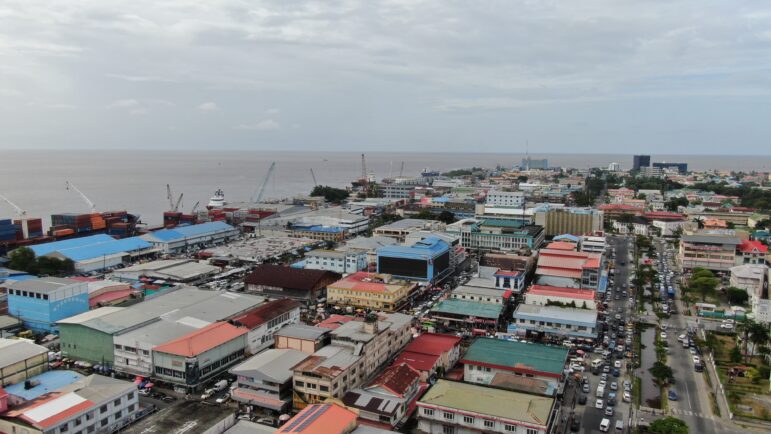
Given the growing focus on more renewable energy sources to reduce climate change, the country wants to develop its oil resources as quickly as possible with sustainable and responsible development and environmental safeguards. Guyana’s Vice President Dr. Bharrat Jagdeo who is also the pioneer of the LCDS, said while the country is producing oil, it is simultaneously working to diversify its energy mix with the use of solar and hydro energy.
“The energy policy of Guyana is framed within a net zero policy, it strikes balances, and it is framed to create opportunities for investors but at the same time the people of this country must share significant part of the revenue from those resources,” Dr. Jagdeo said while addressing the International Energy Conference.
With an exorbitant energy bill and unreliable power supply, a $1B US dollars gas-to-shore project is being developed and is expected to generate 250 to 300 megawatts of power using natural gas from offshore.
Following concerns about the current Production Sharing Agreement (PSA) with oil major ExxonMobil, two new draft PSAs were recently made public and will be used for new oil activities offshore Guyana, including the upcoming oil blocks’ auction.
The bid for 14 new oil blocks was launched last December with contracts expected to be awarded by May this year.
The draft documents released earlier this month by the government provide the public with a 14-day consultation period before the contracts are finalised. The proposed documents are an improvement from the 2016 controversial PSA signed with the ExxonMobil-led consortium for the Stabroek Block. Significant features in the draft documents include insurance by oil companies to cover oil spills, an abandonment fund controlled by Guyana, taxes to be paid by oil companies and international best practices for field development plans among others.
For a nation that has long suffered social inequalities, poverty and other issues, oil is seen as a godsend to transforming and developing the country. While commendable efforts by the government are being made to diversify the economy with millions invested in the agriculture, manufacturing and tourism sectors, Christopher Ram does not believe it will be enough to avoid the resource curse.
“Even all the non-oil sectors that are doing well, it is because of oil and gas,” Ram told CIJN.
The ruling administration in Guyana continues to say it is being transparent with the oil industry but Collins, the TIGI Director opined that the government is managing the country’s affairs under a curtain of secrecy. This he said transcends administration. “In fact, all our governments have been doing that, especially as it relates to petroleum,” Collins noted.
Collins, who has been the director of the corruption watchdog organisation for several years, recommends increased access to information relating to the sector and employing qualified people to manage critical areas.
Guyana’s politicians, environmentalists, transparency advocates and ordinary citizens have a monumental task ahead. Oil revenues are predicted to more than double within the next few years. The massive budget expenditures are likely to increase as well. Both the inflow of revenue and outflow of spending in key sectors of the economy will demand unprecedented scrutiny. It will also require the unflinching determination of all key players if Guyana is to avert becoming the newest nation whose dreams were thwarted by “the Oil Curse.”
This is an investigation completed by Isanella Patoir for Caribbean Investigative Journalism Network with the support of the International Center for Journalists (ICFJ) as part of the Investigative Journalism Initiative in the Americas.

